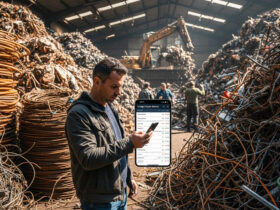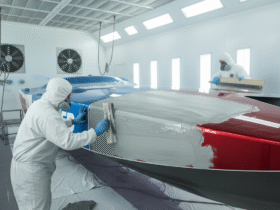What does the future hold for commercial joinery? Are contemporary techniques rendering age-old carpentry strategies obsolete? Or is there a fusion of old and new waiting to be discovered? In today’s comprehensive exploration, we delve deep into innovative trends sweeping the commercial joinery industry and ponder the exciting prospects it presents. With an industry marked by an intriguing blend of traditional craftsmanship and modern-day technology, let’s take a closer look.
Commercial joinery, closely intertwined with interior design and architecture, plays a pivotal role in shaping our built environment. As we move into a more eco-conscious era, it’s essential to identify how this sector is adapting, innovating, and applying principles of sustainable design to balance aesthetic with functionality and longevity.
We’re poised to traverse the evolutionary arc of commercial joinery, meticulously dissecting fascinating trends and scenarios that could potentially rewrite the rules of the game. Our journey will take us through an array of subtopics resonating with the who, why, what, and when of these transformative trends.
A Revolution In Materials And Techniques

The selection of materials in commercial joinery is undergoing a significant shift, pointing towards a more sustainable and eco-friendly future. It’s no longer just a matter of aesthetics and durability. Today, commercial joinery has begun to prioritize renewable, recycled, and non-toxic materials.
In essence, the industry has turbo-charged traditional techniques with an environmental consciousness. Robotic arms and laser-guided tools which increase precision joinery and minimize wastage illustrate how technology has infiltrated the field, creating a unique blend of craftsmanship and machinery.
The revolution in techniques also marks a dramatic turn to computational design and digital manufacturing. This approach embraces 3D modelling software and virtual reality, enabling designers to visualize complex joinery works before they’re even produced.
The Rise Of Biophilic Design In Commercial Joinery
Biophilic design is more than a trend; it’s fast becoming integral to commercial joinery. Why? As more people crave deeper connections with nature, the demand for organic, natural materials and designs has swiftly climbed the popularity ladder.
The twist in the tale lies in how this design philosophy adopts a broader role than just enhancing aesthetics. For instance, it translates into healthier interiors by incorporating more wooden structures, which bear innate qualities to control humidity.
Subsequently, the use of biophilic design also reduces our environmental footprint by promoting sustainable materials and practices. Thus, commercial joinery is transcending from being solely design-oriented to playing a more profound role in wellbeing and sustainability factors.
Smart Joinery For Future Workspaces
What happens when commercial joinery meets technology innovation? You get smart furniture. This trend illustrates how conventional joinery is forging new directions for itself, adding versatility and adaptability to our workspaces.
Intuitive office desks that adjust to your posture, interactive reception counters, wireless charging tables- these aren’t just fantasies anymore. They are reality, a testament to how rapidly technology is conquering commercial joinery.
Splicing technology with joinery is not just about ‘smart’ aesthetics; it’s about improving ergonomics and occupational wellbeing. For a world that’s striving to inhabit healthier, futuristic workspaces, this trend seems destined to prosper.
3D Printing’s Impact On Commercial Joinery

When considering the future of commercial joinery, one cannot overlook the potential of 3D printing. It offers an unprecedented level of design flexibility and customization, with fewer limitations on shapes and forms. Sounds appealing?
Also, it has jaw-dropping speed! Compared to traditional methods, 3D printing accelerates the production process, efficiently bringing intricate designs to life.
However, it doesn’t necessarily reflect the apocalypse for handcrafted pieces. Instead, it presents a potential for symbiosis, where machinery enables and enhances craftsmanship’s limitations.
Conclusion – Joining The Dots
Tying all together, the evolution of commercial joinery pivots not only on design advancements or material considerations but also on the larger context of evolving lifestyles, occupational needs, and environmental mindfulness.
From smarter materials and biophilic designs to smart furniture and 3D printing, these trends cohesively underline how the field is expanding its scope in each domain. At this rate, it’s not too far-fetched to expect a future where commercial joinery could lead the way in designing sustainable, ergonomic, and innovative built environments.
Each innovative wave makes it clear that the future of commercial joinery futures is anything but ordinary. Technology-fueled transformations and value-driven shifts are indeed reshaping its traditional boundaries. And frankly, it’s an exciting frontier to step into. Embarking on this journey, we’re all part of a bigger story – a story of evolution, innovation, and responsible design.










Find Us on Socials